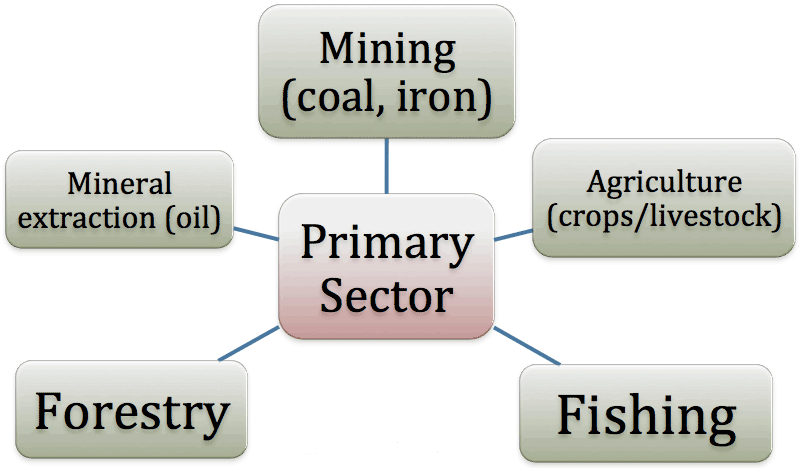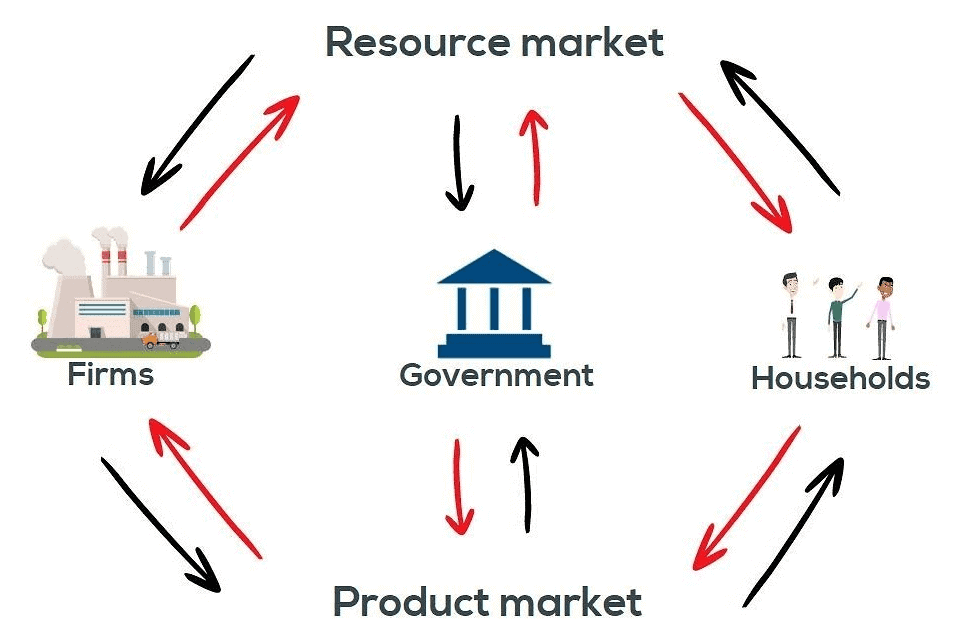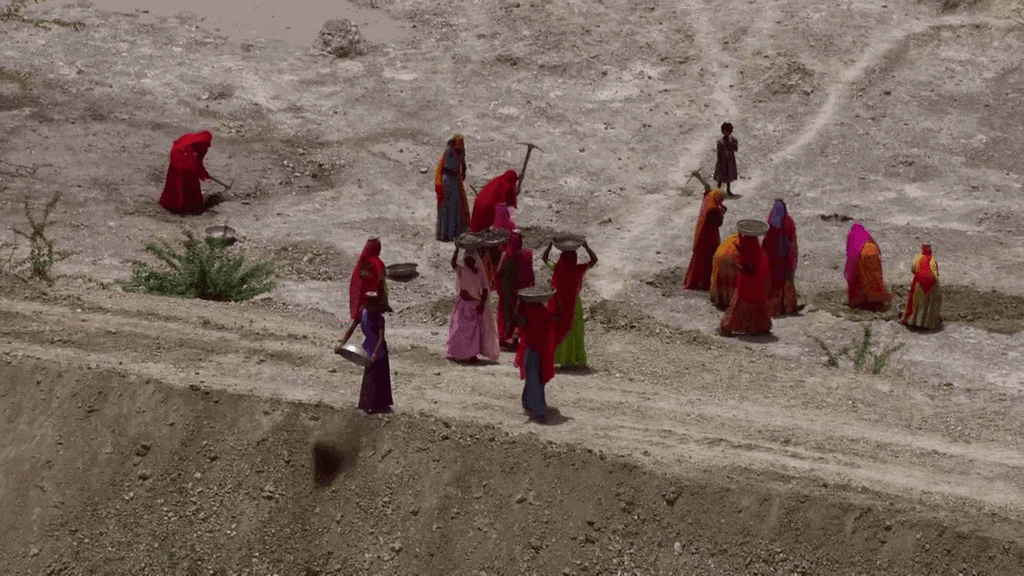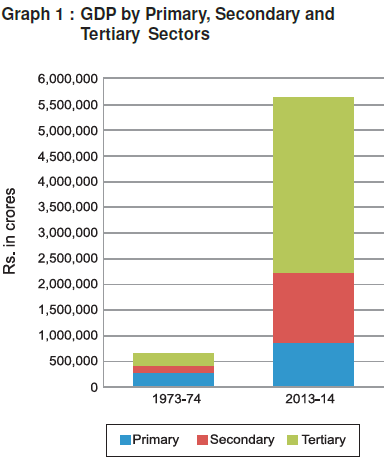- In Palampur, farming is the main activity. Several other activities such as small-scale manufacturing, dairy transport, etc. are also carried out.
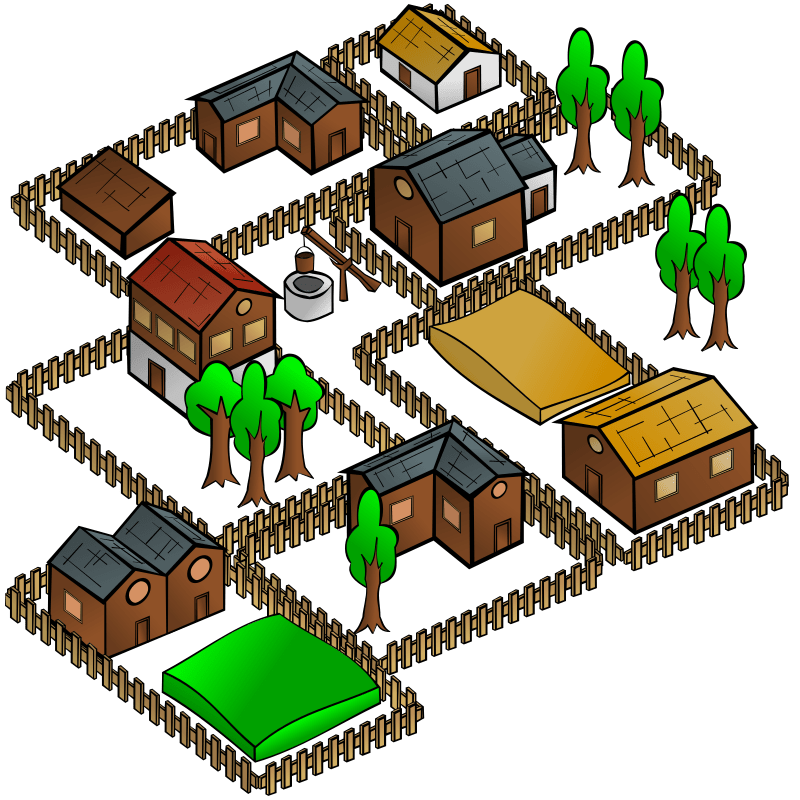
- In these production activities, various resources combine to produce the desired goods and services.
- Palampur is well connected with neighbouring villages and towns. An all-weather road connects the village to Raiganj and further on to the nearest small town.
- Many kinds of transport such as bullock carts, tongas, bogeys, motorcycles, jeeps, tractors, and trucks are visible on this road.
- Palampur has about 450 families belonging to several different castes. 80 families of the upper caste own the majority of the land.
- Their houses are quite large and made of brick with cement plastering.
- The SCs (Dalits) comprise one-third of the population and live in one corner of the village and in much smaller houses, some of which are of mud and straw.
- Most of the houses have electric connections.
- Electricity powers all the tube wells in the fields. Electricity is also used in various types of small businesses.
- Palampur has two primary schools and one high school. There is a primary health centre run by the government and one private dispensary.
Production of any type of goods or services required the services of four factors of production which helps in the overall organisation of production.
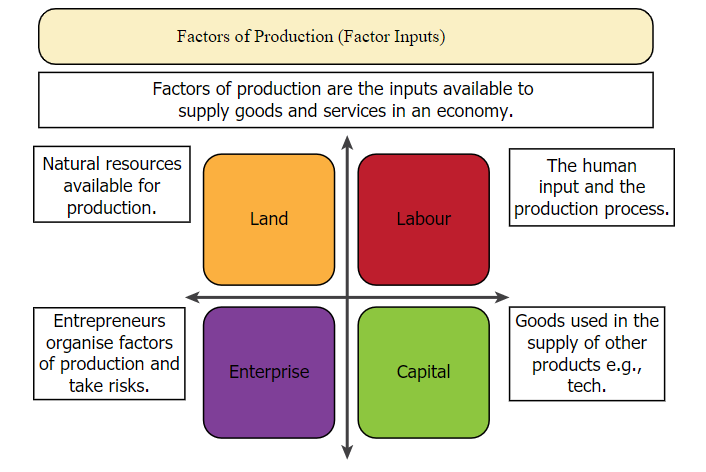
- The first requirement is land and other natural resources such as water, forests, and minerals.
- The second requirement is labour. Some production activities require highly educated workers, other activities require workers who can do manual work.
- The third requirement is physical capital, i.e. the variety of inputs required at every stage during production. Tools, machines, buildings can be used in production over many years, and are called fixed capital. Raw materials and money in hand are called working capital these are used up in production.
- There is a fourth requirement too. One needs knowledge and enterprise to be able to put together land, labour, and physical capital and produce an output. This, these days is called human capital. Every production is organized by combining land, labour, physical capital, and human capital, which are known as factors of production.
- Farming is the main production activity in Palampur.
- 75 percent of the working people are dependent on farming for their livelihood.
- Since 1960 in Palampur, there has been no expansion in land area under cultivation. By then, some of the wastelands in the village had been converted to cultivable land.
- There exists no further scope to increase farm production by bringing new land under cultivation.
- All land is cultivated in Palampur. No land is idle.
- During the rainy (Kharif) season, people grow jawar and bajra which are used as cattle feed. Between October to December they cultivate potatoes.
- In the winter (or the Rabi) season they sow wheat. A part of the land area is also devoted to sugarcane which is harvested once every year.
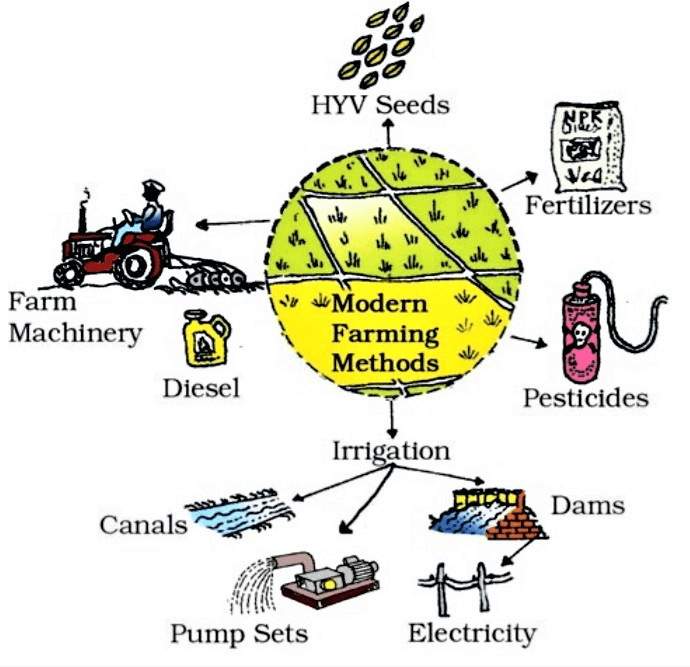
- Modern farming methods have overused the natural resource base. Due to the increased use of chemical fertilisers, the soil lost its fertility.
- Natural resources like soil fertility and groundwater are destroyed and it is very difficult to restore them.
- Not all the people engaged in agriculture have sufficient land for cultivation. In Palampur, about one-third of the 450 families are landless, i.e. 150 families, most of them Dalits, have no land for cultivation.
- Of the remaining families who own land, 240 families cultivate small plots of land less than 2 hectares in size.
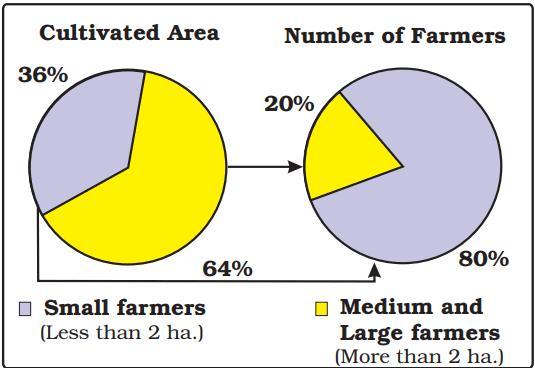 Land Distribution between Farmers of Palampur
Land Distribution between Farmers of Palampur
- In Palampur, there are 60 families of medium and large farmers who cultivate more than 2 hectares of land. A few of the large farmers have land extending over 10 hectares or more.
- Farming requires a great deal of hard work. Small farmers along with their families cultivate their own fields. Thus, they provide the labour required for farming themselves. Medium and large farmers hire farm labourers to work in their fields.
- Farm labourers come either from landless families cultivating small plots of land. Unlike farmers, farm labourers do not have a right over the crops grown on the land. Instead, they are paid wages by the farmer for whom they work. Wages can be in cash or in-kind of the crop. Sometimes labourers get meals also.
- Wages vary widely from region to region, from crop to crop, from one farm activity to another (like sowing and harvesting) there is also a wide variation in the duration of employment a farm labourer might be employed on a daily basis, or for one particular farm activity like harvesting, or for the whole year.
- Most small farmers have to borrow money to arrange for the capital. They borrow from large farmers or village moneylenders or traders who supply various inputs for cultivation. The rate of interest on such loans is very high. They are put in great distress to repay the loan.
- In contrast to the small farmers, the medium and large farmers have their own savings from farming. They are thus able to arrange or the capital needed.
- Small farmers have a little surplus because their total production is small and from this, a substantial share is kept for their own family needs. So, it is the medium and large farmers who supply wheat to the market.
- Large and medium farmers sell surplus farm products. A part of the earnings is saved and kept for buying capital for the next season. Thus, they are able to arrange for the capital for farming from their own savings. Some farmers might also use the savings to buy cattle, trucks, or to set up shops.
- The wheat the farmers produce from the land is retained in part for their family consumption and they sell the surplus wheat.
- Only the medium and large farmers supply wheat to the market.
- Land being a natural resource, it is very necessary to be careful in its use. Modern farming methods have overused the land resource.
- Green Revolution is associated with the loss of soil fertility due to the increased use of chemical fertilizers.
- Continuous use of groundwater for tube well irrigation has reduced the water level below the ground.
- Environmental resources like soil fertility and groundwater are built up over many years. Once destroyed, it is very difficult to restore them.
- The major impact of the spread of electricity in Palampur was to transform the system of irrigation.
- Electricity helped the farmers to shift from the traditional Persian wheels to electricity-run tube wells.
- The irrigation capacity of electricity-run tube wells is much more than that of the Persian wheels.
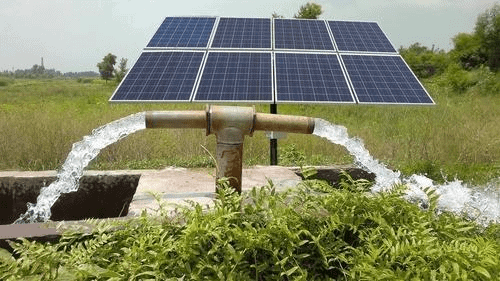 Solar Tube Wells
Solar Tube Wells
- The spread of electrical leads literally moved the whole society from darkness to light. It transformed all social-economic norms of life. It is like a whole new world.
- The main reasons why farmers are able to grow three different crops in a year are:
(i) As a result of the coming of electricity in the Palampur village, people have greatly improved the system of irrigation. They can now irrigate more lands quite effectively.
(ii) Tube wells were first installed by the government but soon people were able to set up their own tube wells.
(iii) By multiple cropping more than one crop is grown on a piece of land during the same year. All farmers in Palampur grow at least two main crops; many are growing potato as the third crop.
(iv) The other way is to use modern farming methods for higher yield. Higher yields are possible from a combination of HYV seeds, irrigation, chemical fertilizers, pesticides etc.
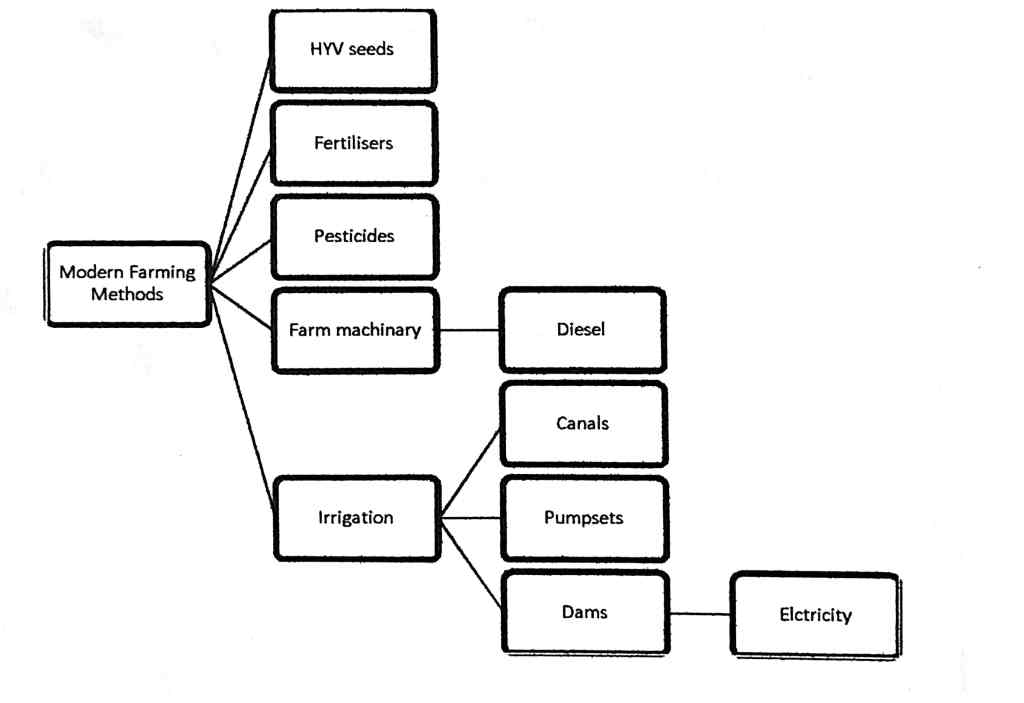
- The large increase in crop yields, leading to record food production started, in our country from 1960 onwards and marked a turning point in Indian agriculture which has led to the green revolution in our country.
- The great increase in the production of food grain crops especially the wheat crop in our country during the last 30 years is called the Green Revolution. This is because a sort of revolution has taken place in Indian agriculture leading to enormous food grain production.
- The revolution is called because it has led to unprecedented greenery of crops everywhere. The period 1960 to 1980 is also called the ‘golden era’ for the record food grain production.
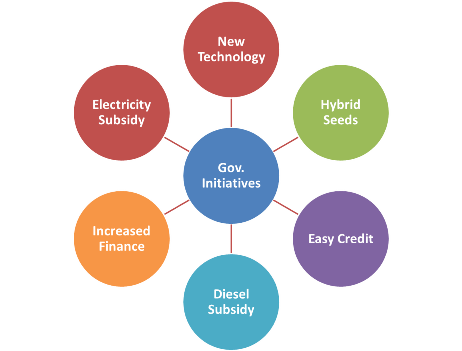
- It is because of the green revolution that our country has become self-sufficient in food production and even buffer stocks of food grains have been created for use in times of natural calamities like drought and floods.
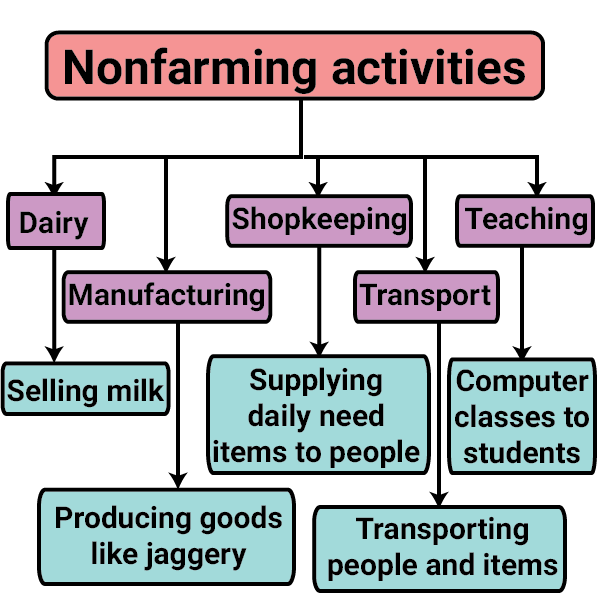
- Dairy is a common activity in many families of Palampur. People feed their buffalos on various kinds of grass and the jawar and bajra that grow during the Kharif season.

- The milk is sold in Raiganj, the nearby large village. Two traders from Shahpur town have set up collection cum chilling centres at Raiganj from where the milk is transported to faraway towns and cities.
- Less than fifty people are engaged in manufacturing in Palampur, unlike the manufacturing that takes place in the big factories in the towns and cities.
- Manufacturing in Palampur involves very simple production methods and is done on a small scale. It is carried out mostly at home or in the fields with the help of family labour.
- People involved in the trade (exchange of goods) are not many in Palampur. the traders of Palampur are shopkeepers who buy various goods from wholesale markets in the cities and sell them in the village.
- There are a few small general stores in the village selling a wide range of items like rice, wheat, sugar, tea, oil, biscuits, soap, toothpaste, batteries, candies, notebooks, pen, pencil, and even some cloth.
- There are a variety of vehicles on the road connecting Palampur to Raiganj, Rickshawalas, tanga walas, jeep, tractor, truck drivers and people driving the traditional bullock cart and bogey are people in the transport services.
- They ferry people and goods from one place to another, and in return get paid for it.
